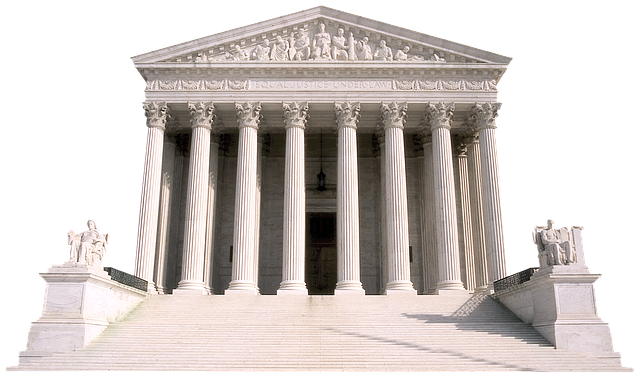Comprehensive Guide to California Law on Eviction and Processes

Introduction To the Eviction Process in California
Eviction is a complex legal process in California, governed by numerous laws and regulations to protect landlords and tenants. This guide provides an in-depth look at the California eviction process, including the specific rules and procedures, relevant laws, and important considerations for all parties involved. Whether you’re a property owner, tenant, or legal professional, understanding the intricacies of California’s eviction laws is crucial for navigating this challenging terrain.
1. Overview of California Eviction Laws

California’s eviction laws are outlined in the state’s Civil Code and Code of Civil Procedure. These laws establish the legal framework for eviction, detailing landlords’ and tenants’ rights and responsibilities. Key legislation includes:
- The California Tenant Protection Act of 2019 (AB 1482)
- The Ellis Act
- Local rent control ordinances (where applicable)
The eviction process in California begins when the landlord delivers eviction court forms to the tenant, setting the deadline for vacating the property.
2. Legal Grounds for Eviction

In California, landlords must have a valid reason to evict a tenant. Common legal grounds include:
- Failure to pay rent
- Violation of lease terms in the lease agreement or rental agreement
- Engaging in illegal activities on the property
- Causing significant damage to the rental unit
- Creating a nuisance or interfering with other tenants
Related Terms: lease or rental agreement, eviction process, eviction lawsuit, eviction notice, termination and eviction process, correct eviction process
3. The Eviction Process: Step by Step

3.1 Proper Notice
The eviction process begins with the landlord serving proper eviction notices to the tenant. The type of written notice depends on the reason for eviction:
- 3-Day Notice to Pay Rent or Quit
- 3-Day Notice to Perform Covenant or Quit
- 3-Day Notice to Quit (for serious lease violations)
- 30-Day or 60-Day Notice to Terminate Tenancy (for month-to-month agreements)
3.2 Filing the Unlawful Detainer Lawsuit
If the tenant fails to comply with the notice, the landlord may file an unlawful detainer lawsuit. This involves:
- Preparing and filing the complaint with the appropriate court
- Paying the required filing fee
- Serving the tenant with a copy of the complaint and summons
3.3 Tenant’s Response
The tenant has five court days to file a response to the lawsuit. Their options include:
- Filing an answer
- Filing a demurrer
- Filing a motion to quash service of summons
3.4 Court Proceedings
If the tenant responds, the case proceeds to trial. If they don’t respond, the landlord may request a default judgment.
3.5 Judgment and Writ of Possession
If the landlord wins the case, the court issues a judgment for possession of the property. The landlord must then obtain a writ of possession, which authorizes law enforcement to remove the tenant.
3.6 Eviction by Sheriff
The sheriff posts a notice to vacate and returns after a specified period to physically remove the tenant if necessary.
4. Tenant Protections and Defenses

California law provides several protections for tenants facing eviction:
- Retaliation defense
- Discrimination defense
- Habitability defense
- Improper notice defense
- Rent control protections (where applicable)
5. Special Considerations

5.1 Just Cause Eviction Requirements
Under the Tenant Protection Act, landlords, in many cases, must have “just cause” to evict tenants who have lived in the rental unit for 12 months or more.
5.2 COVID-19 Eviction Protections
While most statewide COVID-19 eviction protections have expired, some local jurisdictions may still have measures in place. Always check current local ordinances.
5.3 Security Deposits
Landlords must follow strict rules regarding the handling and return of security deposits after an eviction.
6. Eviction Prevention and Alternatives

Exploring alternatives to eviction can benefit both landlords and tenants:
- Mediation services
- Payment plans for overdue rent
- Lease modifications
- Cash for keys agreements
7. Legal Resources and Assistance

Landlords and tenants are encouraged to seek legal advice when navigating eviction. Resources include:
- Legal aid organizations
- Tenant rights groups
- Local bar associations
- Housing counseling agencies
Conclusion

Navigating California’s eviction laws requires careful attention to detail and a thorough understanding of legal procedures. While this guide provides a comprehensive overview, the complexity of eviction cases often necessitates professional legal assistance. Landlords and tenants should prioritize clear communication and explore all available options before eviction proceedings.
FAQs

- Q: How long does the eviction process typically take in California? A: The process can take anywhere from 30 to 60 days but may extend longer if the tenant contests the eviction or if the courts are backlogged.
- Q: Can a landlord evict a tenant without going to court? A: No, self-help evictions are illegal in California. Landlords must follow the legal eviction process through the court system.
- Q: What happens to a tenant’s belongings after eviction? A: The landlord must follow specific procedures for storing and potentially disposing of abandoned property, as outlined in California Civil Code Section 1983.
- Q: Are there any restrictions on evicting older people or disabled tenants? A: While no blanket protections exist, some local ordinances provide additional protections for vulnerable populations. Always check local laws.
- Q: Can a tenant be evicted for having unauthorized occupants? A: If the lease prohibits unauthorized occupants, this can be grounds for eviction if the proper notices are served and procedures are followed.
Recent Case Law

- Frith v. Regency Apartments (2023): The California Court of Appeal clarified the application of the COVID-19 Tenant Relief Act, emphasizing the importance of proper notice even during emergency periods.
- Martinez v. O’Hara (2022): This case reinforced the strict interpretation of the Ellis Act, highlighting the limited circumstances under which landlords can evict tenants to “go out of business.”
- Wong v. Thrifty Corporation (2021): The court addressed the intersection of commercial evictions and force majeure clauses in the COVID-19 pandemic, guiding similar situations in residential contexts.
- Johnson v. Placerville Properties LLC (2023): This case further defined “substantial remodel” under the Tenant Protection Act, clarifying when landlords can evict for property improvements.
- Ramos v. Superior Court (2022): The California Supreme Court ruled on the constitutionality of certain COVID-19 eviction protections, balancing property rights with public health concerns.
These cases represent the evolving nature of California eviction law and underscore the importance of staying informed about the latest legal developments.
Evictions Definitions
Eviction: The legal process of removing a tenant from a rental property.
Example: The landlord started eviction proceedings due to unpaid rent.
Lease: A contract that allows a tenant to live in a property for a set time. Example: Sarah signed a one-year lease for her new apartment.
Rent: Money a tenant pays to a landlord for using a property.
Example: Tom pays $1000 monthly rent for his studio apartment.
Tenant: A person who rents and occupies land or property from a landlord.
Example: As a tenant, Maria is responsible for cleaning her rented house.
Landlord: The owner of a property who rents it out to tenants.
Example: The landlord fixed the broken sink in John’s apartment.
Notice: A formal warning or information given to someone.
Example: The landlord gave a 30-day notice before raising the rent.
Security deposit: Money a tenant pays to cover potential damages or unpaid rent.
Example: Jane got her full security deposit back when she moved out.
Sublease: When a tenant rents out all or part of their property to someone else.
Example: Mike subleased his apartment for the summer with his landlord’s permission.
Utilities: Services such as electricity, water, and gas are provided to a property.
Example: Lisa pays for all utilities except water in her new apartment.
Maintenance: The upkeep and repairs needed to keep a property in good condition.
Example: Regular maintenance of the heating system prevents breakdowns in winter.













